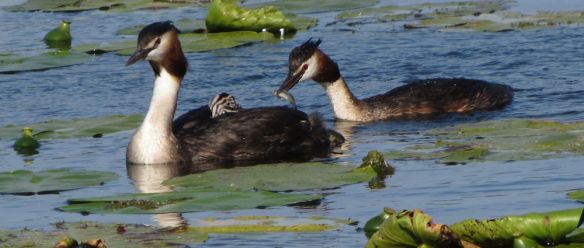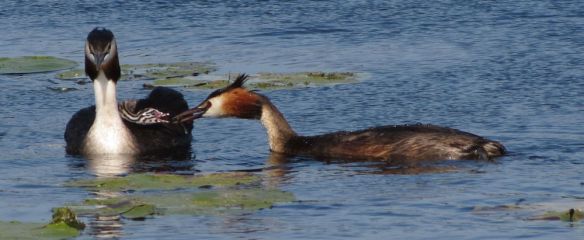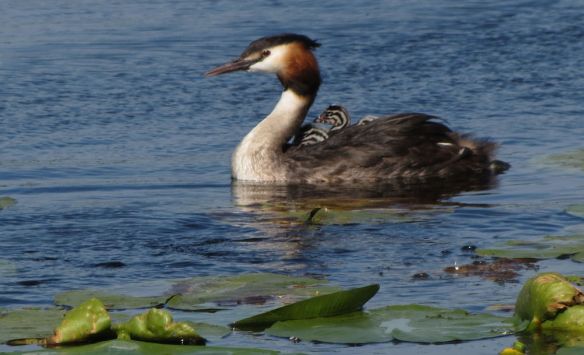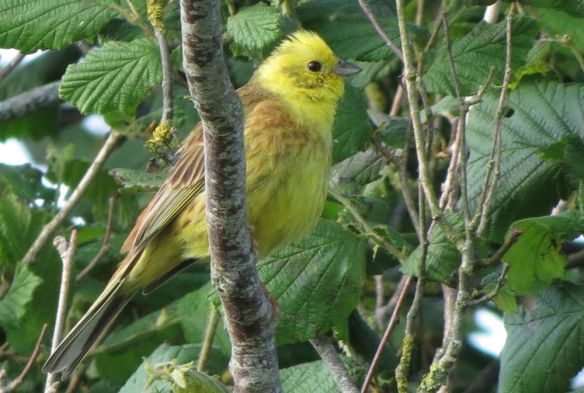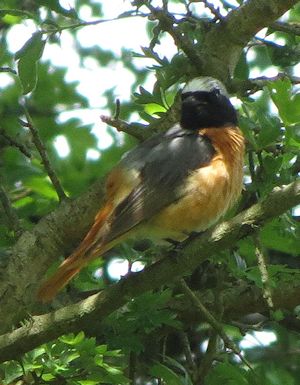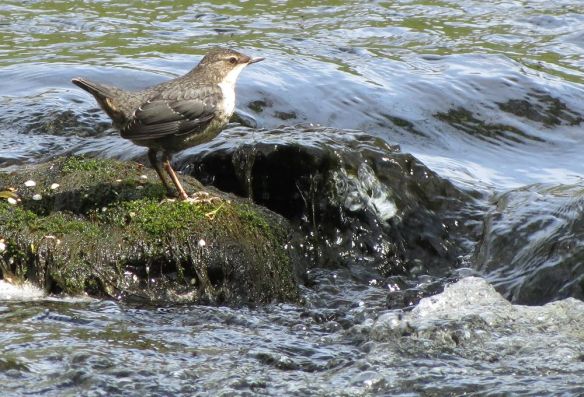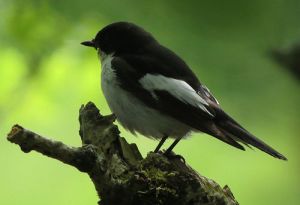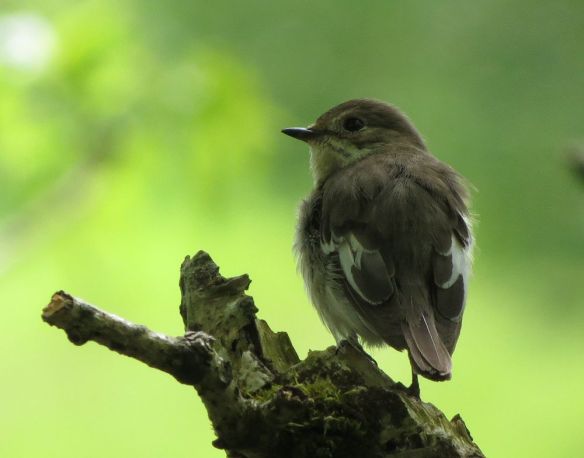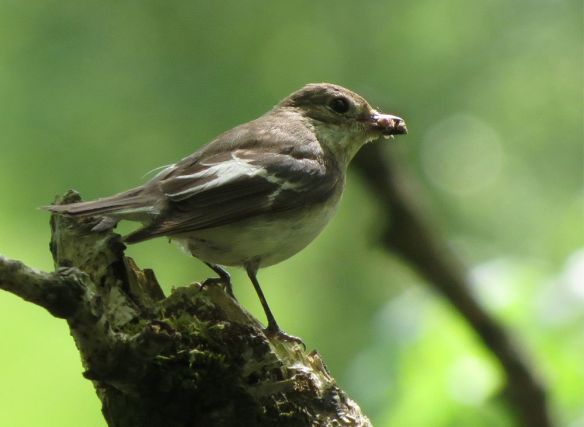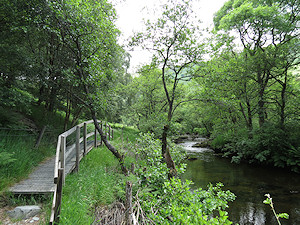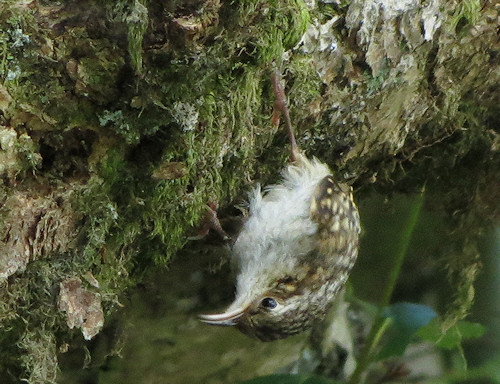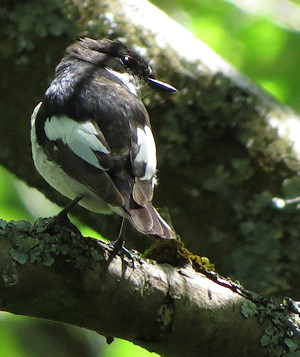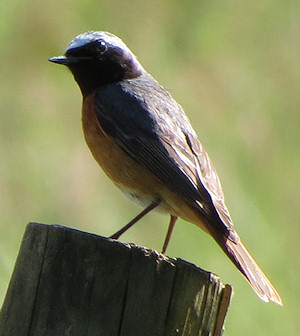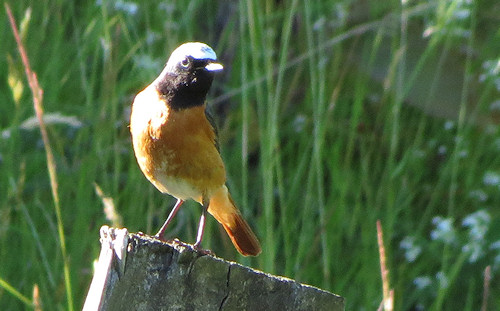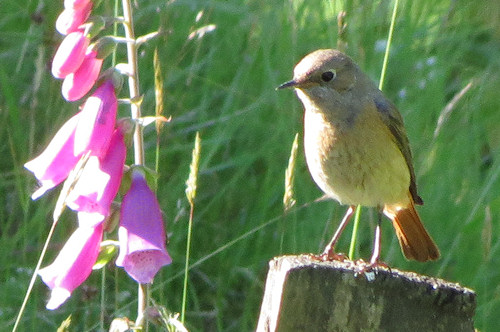The spring migration season is always an exciting time for birdwatchers – and I’ve been particularly fortunate this year. It’s required a couple of early morning starts in the Forest of Dean, wading through floodwaters at Coombe Hill, and a mad dash to Herefordshire – but each one has been immensely rewarding.
The trips to the Forest of Dean were to go on a couple of RSPB guided walks at Nagshead led by Lewis Thomson, the warden. He has an astonishing ability to pick out individual birdsong from the cacophony around: you go along a path, then suddenly he’d point in some random direction and say, “there’s a garden warbler in that bush!” – and you’d look, and there it would be.
We saw a number of stunning birds on the two walks, including both pied and spotted flycatchers and a very showy wood warbler, but the best event was at the end of the second walk. Lewis noticed a pair of redstarts (migrants from north Africa) at a nest site he’d not seen before, and as we watched we realised we were seeing a key moment in their lives: she was inspecting the nest that he’d built to attract a mate. She disappeared inside the tree hole to look around, while he hopped nervously around the branches outside. We were close enough that, with binoculars, we had exceptionally good views of this little drama.
Last Friday I found myself wading through floodwaters with fellow birder Dave Doughty. We were at Coombe Hill Meadows, in the flood-plain of the Severn. A red-necked phalarope had arrived. It’s one of Britain’s rarest breeding birds – most of the few dozen that nest do so on Fetlar, one of the remoter Shetland islands, to which they migrate from their wintering area in the Arabian Sea.
The chance of seeing unusual birds on passage between wintering and breeding sites is one reason why Britain is a good place for birdwatching. Another is that it is unusually well located for attracting rare vagrants from distant places – which can turn up anywhere. This happened rather spectacularly last weekend.
The story goes that Paul Downes, a birder in Herefordshire, had been getting his wife Christina interested in bird-watching. This almost went wrong last Sunday afternoon, because a diversion to see one bird led to her being late for dog-training. As a result she went up Bradnor Hill afterwards to give the dog a longer walk. She came back and said, “there was a strange bird up there…”.

It may have got the journey wrong – but it had plenty of admirers
This turned out to be a bird rarely seen in the UK: a cream-coloured courser. This kind of discovery may be a once-in-a-lifetime event, even for lifelong birders.
It’s a bird that doesn’t do Europe: it inhabits a swathe from north Africa, Arabia and across to Pakistan, but nowhere further north. However, unusual weather has brought a few into southern Europe this spring, and it’s possible that this individual is one of them.
I read about this on Monday, and figured that with a free evening, fine weather and a late sunset, I could get to see it. Hence a mad dash after work.
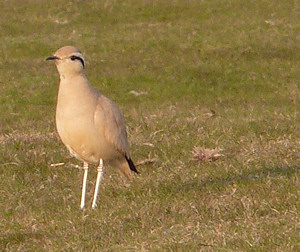
Cream-coloured courser, Bradnor Hill, Herefordshire
By half seven, I’d parked the car on the road past the club house, and made my way over the top to where other birders had gathered, along the 8th fairway. There, just on the edge of the rough, was the courser.
It may not have been quite the semi-desert with which it is normally associated – but it was unperturbed by its abundant admirers, all keeping at a respectful but eager distance. As Paul Downes later put it, “the little show-off [was] seemingly performing laps of honour to the assembled photographers and birders!”


